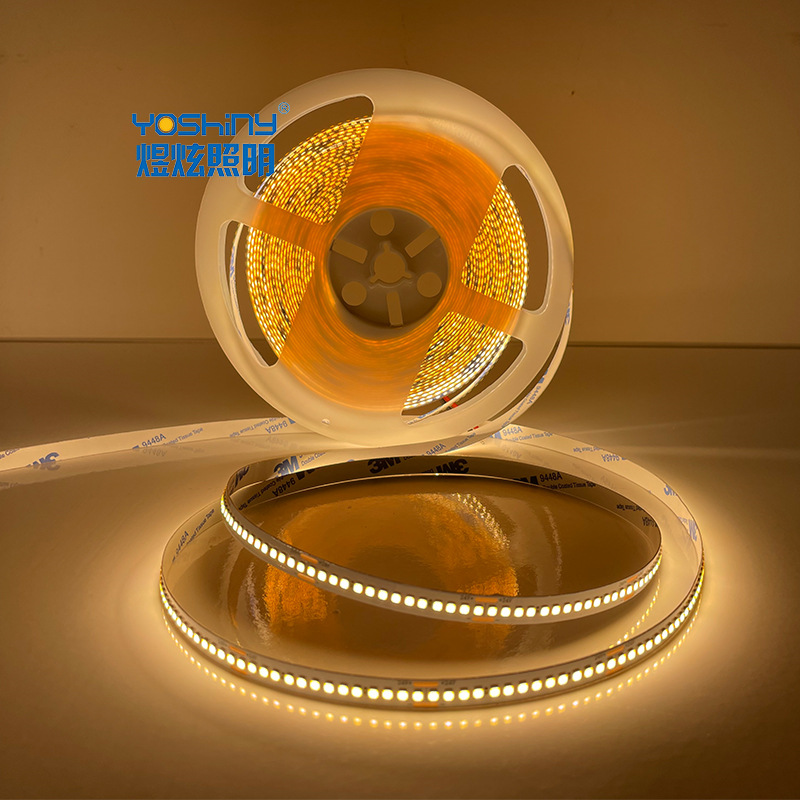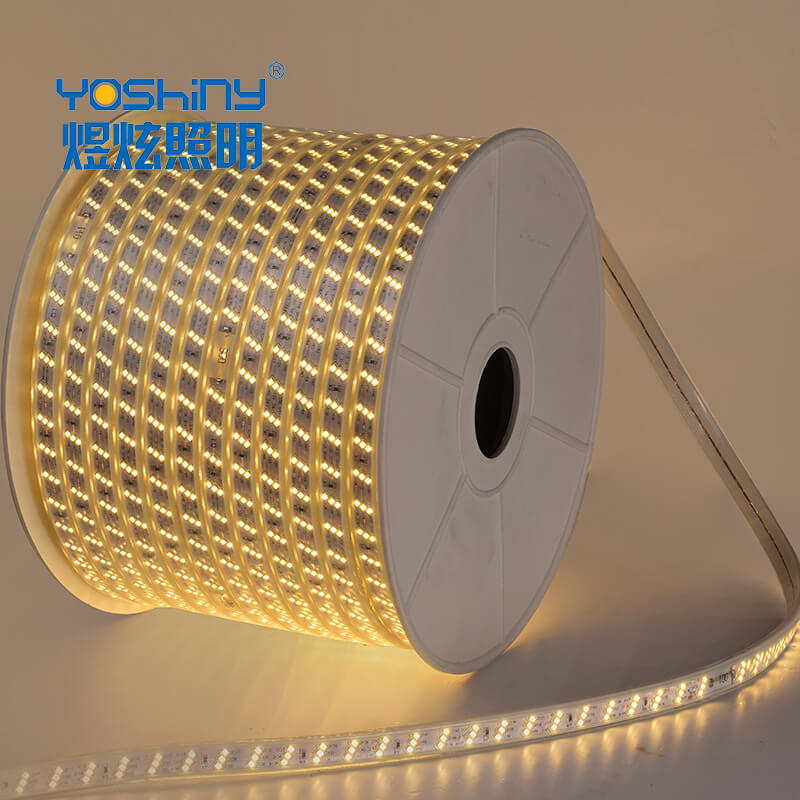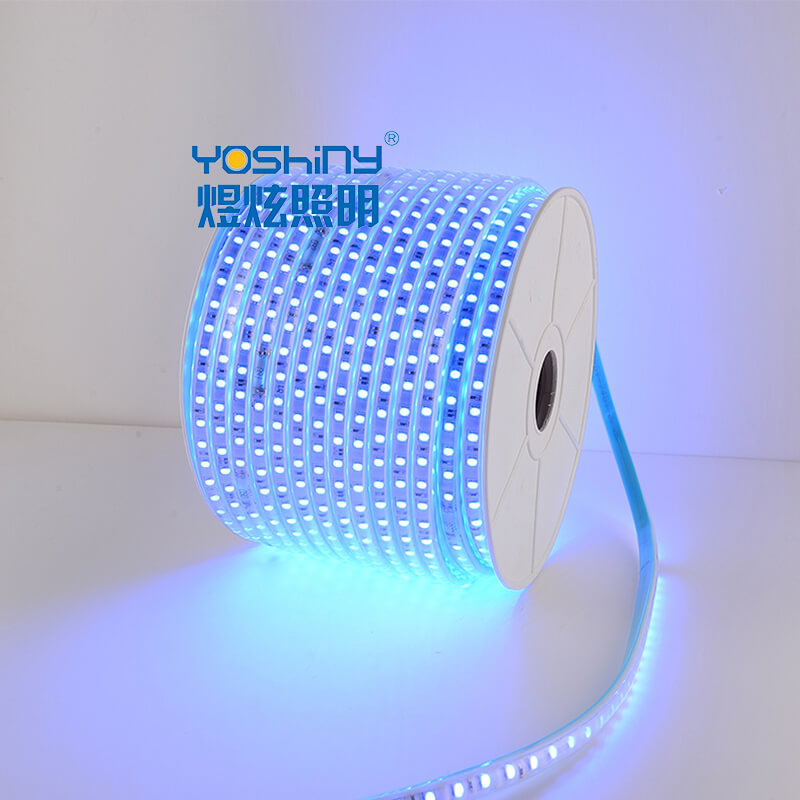LED strip lights have revolutionized the way we illuminate spaces, offering flexibility, energy efficiency, and aesthetic appeal. In the realm of LED strip lighting, the choice between 12V and 24V systems introduces a layer of complexity and customization. Let's delve into the intricacies of these voltage configurations to shed light on their applications, benefits, and installation nuances.
In the realm of modern lighting solutions, LED strip lights have emerged as a versatile and stylish choice. These flexible, adhesive-backed strips of light-emitting diodes (LEDs) have transformed the way we light up our living and working spaces. Within this dynamic field, the voltage requirements play a crucial role, and the 12V/24V LED strip lights stand out as noteworthy players.
Understanding 12V and 24V LED Strip Lights
Different Voltage Requirements Explained
12V LED strips are often preferred for their simplicity and wide-ranging applications. The lower voltage contributes to enhanced safety, making them suitable for residential use. Additionally, 12V systems are known for their ease of installation and compatibility with various controllers, offering users the flexibility to customize lighting effects.
On the other end of the spectrum, 24V LED strips cater to more extensive and demanding lighting setups. The higher voltage allows for longer continuous runs without experiencing voltage drop issues. This makes 24V systems ideal for large commercial and industrial installations where a seamless and uniform glow is paramount.
Technical Differentiators
Understanding voltage drop is crucial in designing effective LED lighting systems. With 12V strips, the potential for voltage drop is higher over longer distances compared to 24V systems. This consideration becomes vital when planning installations in large spaces.
While 24V systems may offer advantages in terms of voltage drop, 12V LED strips often excel in power efficiency. The lower voltage can result in reduced power consumption, making them an eco-friendly choice for those prioritizing energy conservation.
Applications and Design Flexibility
Residential Lighting Solutions
Mood Lighting in Living Spaces
The versatility of 12V LED strips shines in residential settings, where creating specific atmospheres is paramount. Whether it's accentuating architectural details or setting the mood in a bedroom or living room, 12V strips provide an easily controllable and adaptable solution.
Accentuating Architectural Features
Incorporating LED strips into architectural features such as coves, recesses, or even under cabinets can add a touch of elegance to home interiors. The 12V configuration allows for intricate designs without the need for complex wiring setups.
Commercial and Industrial Use
Display Lighting in Retail
For retail environments, where showcasing products is crucial, 24V LED strips take the spotlight. The ability to cover more extensive areas without compromising brightness makes them the preferred choice for highlighting merchandise on shelves or within display cases.
Functional Illumination in Workspaces
In industrial settings or office spaces, 24V LED strips provide bright and uniform illumination. This is essential for maintaining a well-lit and productive environment, ensuring safety and efficiency in day-to-day operations.
Installation and Maintenance Tips
Proper Installation Procedures
Choosing the Right Voltage for Specific Applications
Before embarking on an LED strip lighting project, it's crucial to assess the specific requirements of the space. Selecting the appropriate voltage—whether 12V or 24V—ensures optimal performance and longevity of the lighting system.
Ensuring Correct Wiring and Connection
Proper wiring and connection are fundamental to the functionality and safety of LED strip lights. Following manufacturer guidelines and paying attention to details such as polarity and load capacity can prevent issues and guarantee a seamless lighting experience.
Maintenance Guidelines
Cleaning and Protection
To maintain the longevity and visual appeal of LED strip lights, regular cleaning is essential. Dust and dirt accumulation can affect brightness and overall performance. Additionally, protecting the strips from direct exposure to elements or potential physical damage contributes to their durability.
Troubleshooting Common Issues
Even with meticulous installation, occasional issues may arise. Understanding common problems such as color inconsistencies, flickering, or sections of lights not working empowers users to troubleshoot effectively and ensure the ongoing reliability of their LED strip lighting.
Conclusion
The choice between 12V and 24V LED strip lights opens up a realm of possibilities for creating captivating lighting designs. Whether illuminating a cozy home interior or transforming a commercial space, understanding the nuances of voltage configurations empowers users to make informed decisions and unlock the full potential of LED strip lighting.







